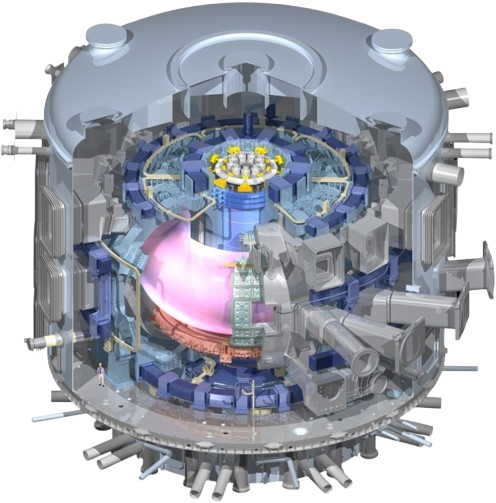
India is playing a pivotal role in the ITER project by contributing both financially and through the in-kind supply of critical components, along with providing high-end technological expertise to this global fusion energy initiative. As one of the seven partner countries, India is responsible for delivering 9% of ITER’s in-kind contributions. These include nine major packages: (i) Cryostat, (ii) In-wall Shielding, (iii) Cooling Water System, (iv) Cryogenic System, (v) Ion-Cyclotron RF Heating System, (vi) Electron Cyclotron RF Heating System, (vii) Diagnostic Neutral Beam System, (viii) Power Supplies, and (ix) selected Diagnostics. Among these, the cryostat stands out as the world’s largest high-vacuum pressure chamber, essential for maintaining the ultra-cold conditions required for fusion reactions. Indian industries have been contracted to manufacture and supply key systems such as the Cooling Water System, Cryogenic System, and RF Heating Systems, demonstrating advanced engineering capabilities. ITER-India, a dedicated project under the Institute for Plasma Research, has successfully developed and delivered complex components like in-wall shielding blocks, diagnostic neutral beam systems, and high-voltage power supplies. These contributions not only propel the ITER mission forward but also enhance India’s domestic fusion research and industrial ecosystem, paving the way for future clean energy solutions.
Overview of Indian Deliverables to ITER
Cryostat
A massive stainless steel structure that provides a vacuum environment to insulate the ITER tokamak, ensuring thermal isolation for the superconducting magnets.
Cooling Water and Heat Rejection System
A sophisticated system designed to remove heat generated during fusion experiments, maintaining optimal operating conditions for ITER components.
Ion-Cyclotron RF Heating System
A high-power radio frequency system used to heat plasma to extreme temperatures required for fusion reactions within the ITER tokamak.
Electron Cyclotron RF Heating System
A system utilizing microwave energy to heat and control plasma, critical for achieving the conditions necessary for sustained fusion reactions.
In-Wall Shielding
Specialized shielding blocks installed within the ITER vacuum vessel to protect against neutron radiation and ensure structural integrity.
Diagnostic Neutral Beam System
A system that injects neutral particles into the plasma to enable precise diagnostics of plasma properties during fusion experiments.
Diagnostics
Advanced diagnostic tools to monitor and analyze plasma behavior, ensuring accurate data collection for ITER’s fusion research.
Cryolines and Cryo Distribution System
A network of pipelines and distribution systems to deliver cryogenic fluids, maintaining the ultra-low temperatures required for ITER’s superconducting magnets.
Power Supplies
High-capacity power supply systems to support the operation of various ITER components, ensuring reliable and stable energy delivery.
